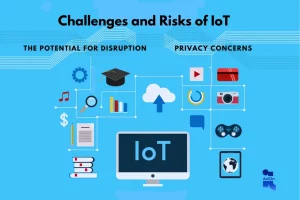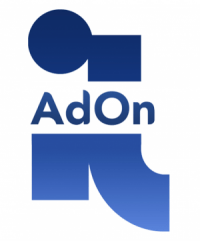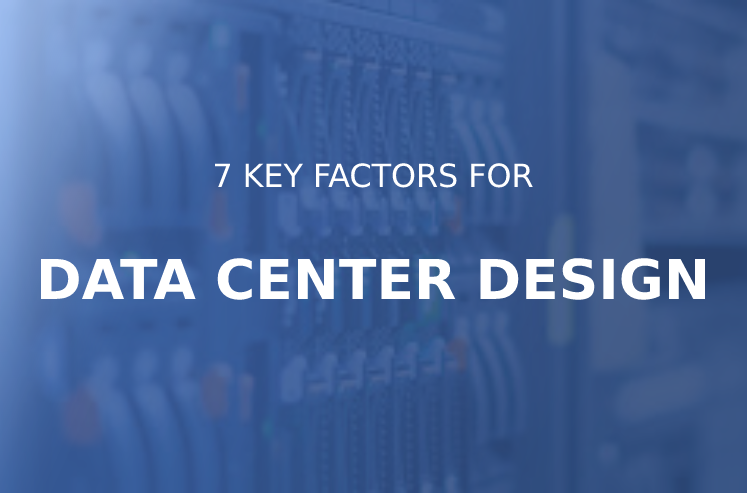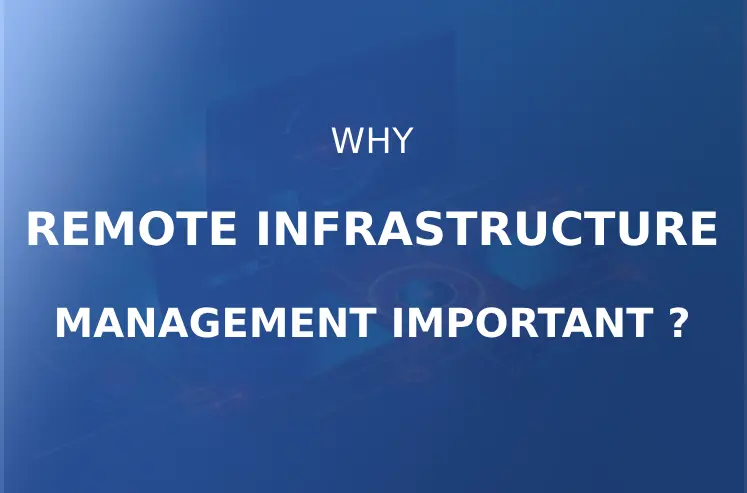
Welcome to the amazing world of the Internet of Things (IoT). In recent years, the emergence of connected devices and objects has revolutionized our lives and opened up endless possibilities. But what does the future of IoT look like? What trends are emerging, and what predictions can be made for the next five years?
The development of IoT is a rapidly evolving field, with new breakthroughs and products arising every day. It’s important to stay on top of these changes so you can take advantage of them to stay ahead in your industry. With that said, let’s explore some of the trends and predictions for IoT over the next five years.
Introduction
The Internet of Things (IoT), with its vast array of connected devices, has transformed the way we work, play, and live. The impact of this technology is far-reaching, from smart homes and office spaces to healthcare, transportation, and beyond. But what does the future of IoT hold?
This blog post is designed to help you understand the potential impact of this revolutionary technology. We’ll look at some predictions for the next five years as well as emerging trends that will shape the future of IoT. By understanding what experts are predicting for this technology, you can prepare yourself and your business for new opportunities and challenges in the next few years.
Current State of IoT
Right now, the Internet of Things (IoT) is one of the fastest-growing technology markets. Research has projected that the global IoT market will exceed $1 trillion by 2025, and it’s already being utilized in industries such as manufacturing, health care, and energy—as well as in our homes.
Today, the most common applications of IoT are smart home products like thermostats, lighting switches, and security cameras. There are also many other products like wearables for fitness and pet trackers that all use IoT technology.
What’s great about these products is that they can be connected to each other and with other devices to create more seamless user experiences. For example, you can link your thermostat to your virtual assistant like Alexa or Google Home to control your home temperature from anywhere in the world. This kind of convenience has made IoT technology attractive to consumers around the world!
Predictions for the Future of IoT
What will the IoT space look like in five years? We can make some predictions based on current trends.
For starters, it’s expected that by 2025 the number of connected devices will skyrocket to 75.44 billion, more than doubling the amount of internet-connected things in 2020 (31.72 billion). This means that more industries and applications than ever before will be leveraging this technology.
Cloud Computing Integration
We can also expect to see an even tighter integration between IoT and cloud computing. As a result, more and more businesses will turn to cloud solutions for data storage and analytics, enabling them to better manage their connected systems and make use of big data insights from those systems.
Increased Security Requirements
The increased usage of the IoT system means that security requirements are going to become stricter as well. As a result, we’ll see a greater focus on developing hardware and software solutions that ensure system safety and integrity are maintained. Security protocols such as two-factor authentication may become standard for most IoT systems in order to ensure user privacy and data security are both maximized.
Of course, these are just some of the predicted changes we can expect to see within the next 5 years, though they’re a good indication of what lies ahead for IoT technology.
Key Trends in IoT
One of the most prominent trends leading the way in IoT development is the use of edge computing. Edge computing is a distributed, open IT architecture that primarily uses resources closer to the source of data, such as sensors or mobile devices. This makes edge-based architectures more resilient and secure, with lower latency than traditional cloud-based networks.
Because of its advantages, edge computing is quickly becoming an industry trend, making it easier for businesses to collect and process data from connected devices located nearby or even on the other side of the world. In addition to reducing latency, edge computing delivers insights faster as data is processed closer to where it’s generated by sensors and other devices.
Edge computing also enables companies to reduce their reliance on cloud-based infrastructure and make better use of available resources while improving scalability. It’s a great way for organizations to reduce their carbon footprint and minimize power consumption while still benefiting from reliable and secure data transmission.
As more organizations embrace this trend, we’re sure to see more growth in the adoption of edge computing over the next 5 years, which will lead to ground-breaking advances in IoT development. Companies like Amazon Web Services and IBM are already paving the way with their own solutions for edge computing— demonstrating that this trend is set to change the future of IoT forever.
Applications of IoT
As you may know, IoT has applications in a variety of industries, and there are many ways to use it. In fact, companies are finding some pretty cool and innovative ways to integrate this technology into their operations. Here is a brief overview of some of the major areas of application for IoT:
Automotive
Manufacturers are already incorporating sensors and internet connections into cars that can monitor engine performance, measure tire pressure, and generate data about fuel efficiency. There’s also a potential for further innovation here with autonomous driving assistants that can help drivers navigate, communicate with other vehicles on the road, and make decisions based on data provided by connected devices.
Healthcare
In healthcare, the use of IoT technology is helping to reduce the cost of patient monitoring and improve the accuracy of diagnoses. Wearable sensors offer real-time patient data that can be remotely monitored by medical personnel, plus access to medical records via secure cloud-based systems.
Agriculture
Agriculture is another area where IoT technology has been used to great effect – farmers are now using sensors to measure soil moisture levels, manage irrigation systems more efficiently and monitor weather patterns. This helps them respond quickly to changing conditions and keep track of harvests more effectively.
Manufacturing
IoT is being used in manufacturing settings as well, providing manufacturers with greater visibility into their operations in order to increase efficiency and productivity. Internet-connected sensors can monitor temperature changes within facilities control production lines remotely or alert maintenance teams when equipment needs repair or adjustment.

Challenges and Risks of IoT
One of the primary concerns regarding the future of IoT is its potential risks and challenges. The ever-growing “Internet of Things” makes our lives easier and more efficient, but without the necessary security protocols, it can be ripe for exploitation.
The Potential for Disruption
The first risk to consider is malicious actors targeting IoT networks, gaining access to these systems to manipulate data and cause disruption. As data moves through networks of connected devices, malware can enter with relative ease—potentially leaving an organization or company unable to gain access to its own systems.
Privacy Concerns
IoT also poses a unique privacy concern. Data generated by connected devices provide invaluable insights — but these same devices have the capability of collecting a variety of personal information such as location, biometric data, etc. Banking on the fact that most users don’t regularly review their privacy settings or update their software, hackers can exploit personal data for malicious intent quite easily without detection.
To mitigate these risks and challenges associated with IoT technology, companies are increasingly investing in security measures such as encryption, authentication protocols, and software updates — as well as partnering with organizations who specialize in cyber security and privacy best practices. For example, Microsoft has invested heavily in creating a secure platform for its Azure Sphere product. Companies like this set a precedent for what will be expected from industry players in the next five years — ensuring those who use IoT technology feel secure and informed about their data privacy choices.
AI and Machine Learning for Automation in IoT
When it comes to the future of IoT, one of the biggest predictions is the use of AI and machine learning for automation in IoT. We are already seeing huge advances in this technology in recent years, and it will only become more prevalent over the next five years.
AI and machine learning can help with automation by making decisions based on data collected by an IoT system. This could include managing production lines, controlling traffic lights, or adjusting energy levels throughout a home or building. With the power of AI and machine learning, these tasks can be automated with almost no human intervention required.
Here’s why AI and machine learning are so important for automation:
- It can process large amounts of data quickly and accurately
- It can detect patterns that humans may miss
- It can make decisions based on what it learns from the data
- It can predict future outcomes
- It can continue learning as new data is added
AI and machine learning are becoming increasingly powerful tools for automating complex processes that would previously have been too time-consuming or too difficult to control manually. And as these technologies continue to evolve over the next five years, they will open up exciting new possibilities for automation in IoT applications.
Future of Smart Homes and Smart Cities
You’ve probably heard about smart homes and smart cities, but what does the future of these advances in technology hold?
Smart Homes
Smart homes are becoming increasingly popular, as people learn more about the benefits of living in a connected home. There are tons of smart home applications that can make your life easier, from connected doorbells to automated lights and locks, to high-tech security systems. We can expect the number of available options and applications to keep increasing in the next 5 years.
Smart Cities
Smart cities are also emerging as a new way to manage urban living. Smart city components allow urban areas to monitor energy usage and waste production more efficiently, while also providing citizens with better access to public services. The next 5 years will bring even more innovative applications for smart city technology, revolutionizing urban life in ways that we can’t even imagine yet.
Security and Privacy of IoT Devices
As more and more devices are connected to the Internet of Things, security and privacy have become increasing concerns for consumers. After all, it’s a legitimate worry—wouldn’t you want to ensure your smart home or connected car is secure from hackers?
That’s why it’s important to stay aware of some of the security and privacy predictions and trends for the next 5 years:
- Increased regulation: More countries are likely to come up with regulations for IoT device manufacturers, ensuring that basic security protocols related to data encryption, user authentication, and access control are met.
- Stronger authentication methods: As technology improves, so will the authentication methods used by IoT devices. Multi-factor authentication is predicted to become the new industry standard in order to keep devices safe.
- More secure infrastructure: The infrastructure used by IoT devices will also improve as companies take cybersecurity concerns seriously and invest in better tools, protocols, and processes that prevent intrusions and data hacks.
- Enhanced privacy controls: Manufacturers will be mandated to include features that give users more granular control over how their data is stored, shared, and used by third-party applications. This will give users more confidence in the security of their information when using IoT devices.
Security and privacy remain a major concern when it comes to IoT devices, but as long as companies continue to invest in research & development for better solutions, users should be able to feel increasingly comfortable with their connected world!
Future of Industrial IoT
Industrial IoT (IoT) is rapidly transforming the manufacturing industry, and its future looks promising. By 2025, the industrial IoT market is expected to be worth $123 billion USD. This growth will be driven by increased automated technology, smart factories, and improved supply chain management.
Automated technology
Automation has already made transformative changes to the manufacturing sector as increasing numbers of industrial processes are automated. The integration of IoT into automated machinery is only continuing to make these automated processes even more efficient. For example, machine data can be collected in real-time and analyzed with powerful analytics tools to ensure increased accuracy, safety, and efficiency in manufacturing operations.
Smart factories
Smart factories are further improving the automation process with artificial intelligence (AI) capabilities which give greater control over machines and processes to help identify issues before they arise and reduce downtime. Smart factories are also able to use predictive analytics which can be used to identify any potential problems in the system or detect when a machine needs maintenance or repair.
Improved supply chain management
The IoT is revolutionizing the way manufacturers manage their supply chains by providing a range of innovative solutions from reducing lead times and improving product tracking to identifying trends in customer behavior for better decision making. For example, predictive analytics tools can now provide manufacturers with insights into future demand for their products that can help them plan for production accordingly.
With these types of services becoming increasingly available, businesses will have more capability to anticipate customer needs and develop smarter strategies for success over the next five years.
Key Takeaways
So let’s sum up. What have we learned about the future of IoT?
Rapid Growth
First, IoT is expected to grow rapidly over the next five years. This means more connected devices, more data, and more opportunities for businesses to capitalize on that data.
Increased Security Concerns
Second, an increase in connected devices brings greater security concerns. Companies will need to invest in sophisticated security infrastructure and advanced encryption measures to keep their systems secure and protect user data.
Edge Computing
Third, edge computing will become increasingly important as more connected devices are deployed in edge environments. This enables real-time processing of data closer to where it is generated, thus enabling improved speed and efficiency of IoT systems.
Autonomous Machines
Finally, autonomous machines powered by AI will become increasingly capable and pervasive, enabling them to complete complex tasks with minimal human intervention. Autonomous machines are capable of collecting and analyzing vast amounts of data from connected sensors, helping businesses make better decisions faster than ever before.
The future of IoT looks incredibly exciting—and it’s only just getting started!
Conclusion
In conclusion, IoT has massive potential to revolutionize the world for the better. We’ve already seen major developments in terms of transportation and healthcare, and this is just the beginning. With more powerful sensors, smarter connectivity, machine learning, greater security measures, and an increased focus on sustainable infrastructure being applied to IoT devices, that potential is only going to grow in the next five years.
We can expect to see a huge transformation in how we interact with technology and how it impacts our everyday lives. We believe that investing in IoT now will help businesses unlock enhanced efficiency and competitive advantage while providing a platform for continued growth into the future.
Ultimately, we believe that with its potential for data-driven decision-making and its ability to improve our lives in countless ways, IoT is set to be one of the most transformative forces of the decade — for individuals as well as organizations — so it should be top of mind when it comes to planning for success in the coming years.
If you have any more questions regarding this or about security please feel free to reach out to our team. ITAdOn is a top-notch IT Support provider in Philadelphia. Contact us today!






